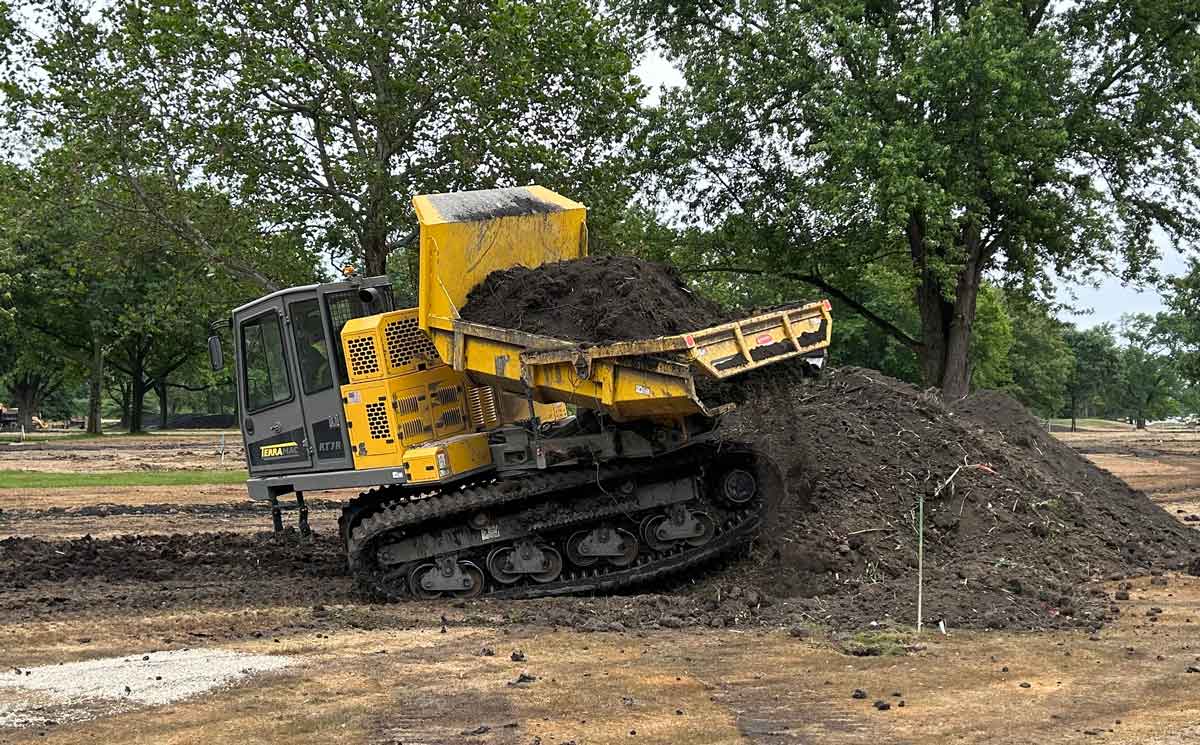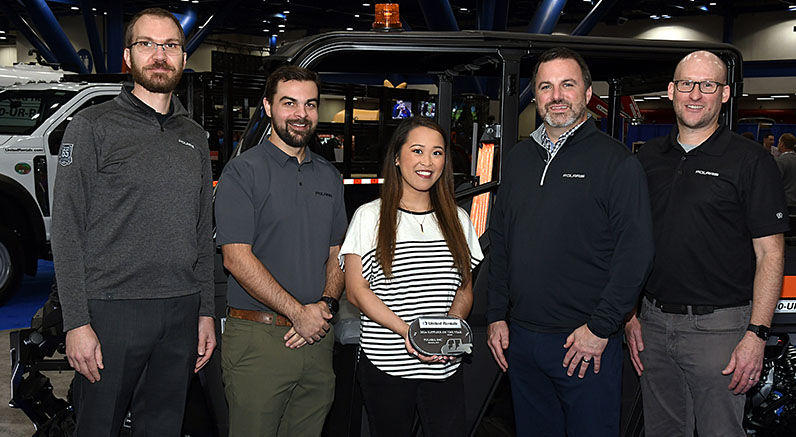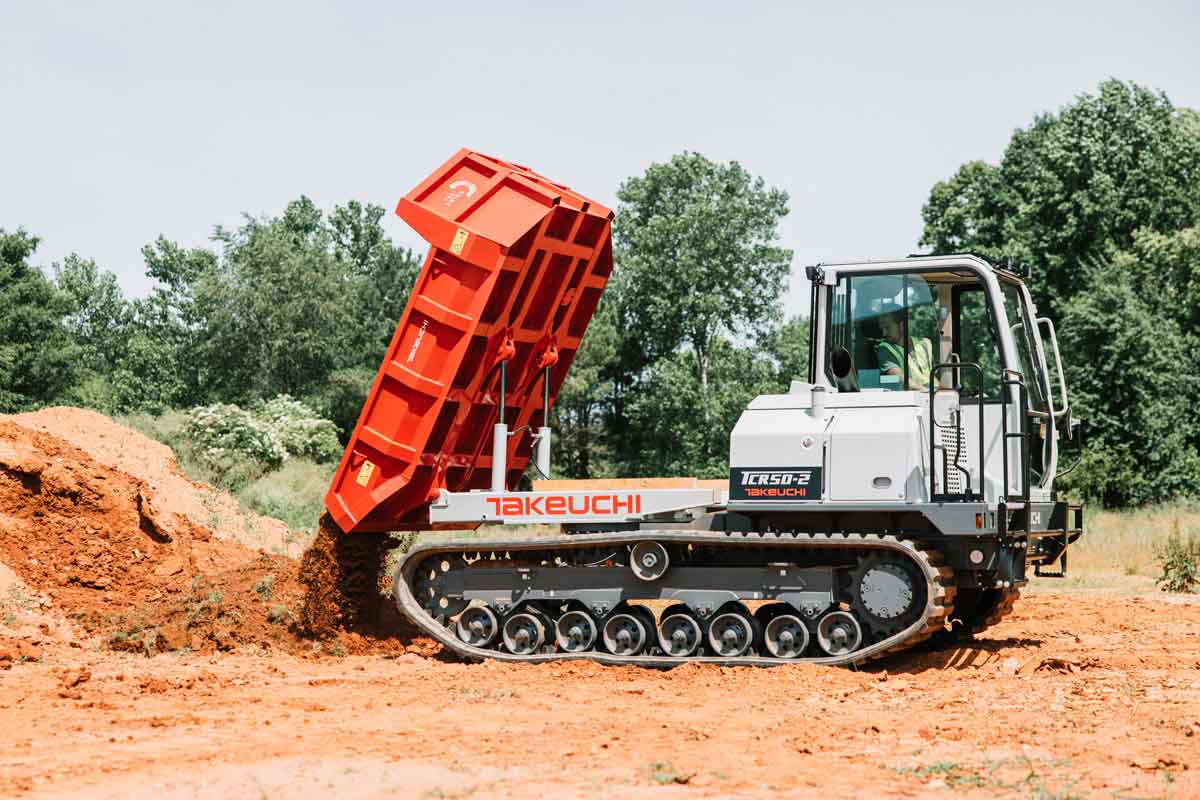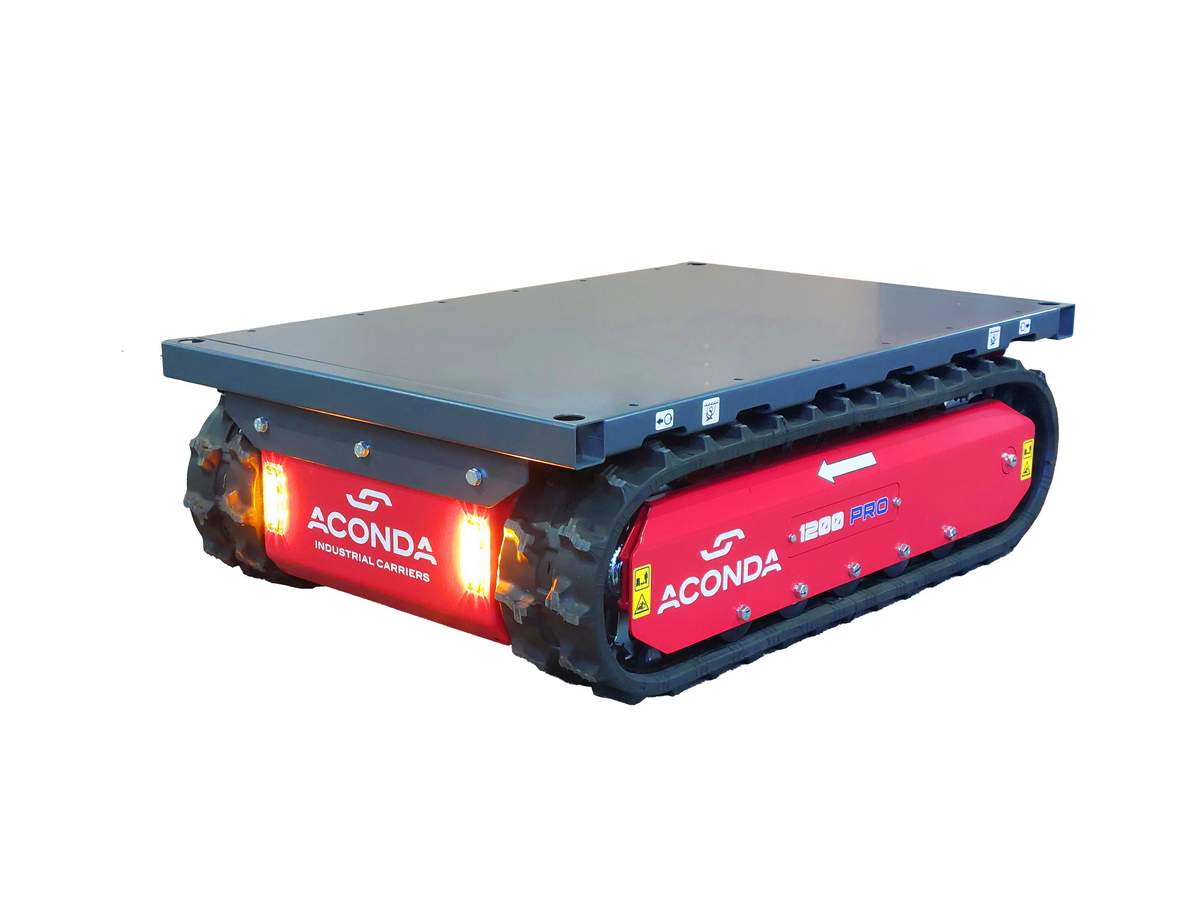Caution: UTVS at Work (a Utility Vehicle Safety Guide)
Work vs. Recreation
Whether you will be using your utility vehicle for work or recreation is an important distinction to make when considering limitations and safety concerns. Although they look similar, most utility vehicles, or UTVs, on the market today fit into one category or the other and are designed for each application accordingly. For example, recreational vehicles operate at speeds up to 60 mph, and therefore are designed for recreational use and are limited on utility capacity. Conversely, most commercial workhorse utility vehicles will have a top speed of 25 mph, a common speed limit at construction sites, and are designed to move people and equipment around a jobsite.
Workhorse models boast features such as large cargo hydraulic dump beds and a wide variety of implements.
Before an operator starts the engine, make sure it’s the right tool for the job. The reality is there is some confusion in the marketplace, and recreation models make their way onto worksites regularly. For commercial applications, you really need a construction workhorse.
Familiarize Yourself with the Machine and Job
Because the uses for utility vehicles are so varied, understanding where and how the UTV will be used is also paramount to operator safety. It’s imperative to get to know the utility vehicles in the fleet, to understand their implements and to see how they work. Conducting a complete walk-around of the vehicle before use is always a good practice; be sure to inspect tires, wheels and attachments to make sure they are in good working condition and ready for the task at hand.
In terms of maintenance advice, it is important to closely follow the manufacturer’s recommended service schedule. If the vehicle has multiple users, be sure the operator’s manuals, safety DVDs and other tools are shared and covered regularly. A good tip is to create a maintenance log. During the walk-around be sure to check this log to ensure the vehicle is serviced and ready for use. It’s also important for operators to get familiar with the terrain and work area. Walk the area first to identify any debris or obstacles that could hinder an operator’s ability to drive safely. An understanding of the vehicle and the terrain can save trouble down the road.
Gear Up
Outfitting your utility vehicle with enhanced safety features is relatively affordable and easy, and the good news is most models come equipped with safety in mind. Ensure that your UTV is equipped with properly working head lights, seatbelts and brake lights. A roll over protection system (ROPS) in conjunction with seatbelts is mandatory.
The operator should also follow all directions included in the owner’s manual regarding any appropriate personal protection gear, dependent upon utility vehicle model, manufacturer and work activities. Never wear loose, torn or bulky clothing while operating a UTV and use additional safety gear when appropriate, such as gloves, hardhats and eye protection.
Traveling Guidelines
Utility vehicles are rugged and specifically designed for off-road use. They will work in almost any rugged environment, but the key to success is to operate it safely and cautiously. The very purpose of a utility vehicle is to move people and equipment more efficiently around a jobsite. Proper operating speed should be maintained based on work conditions and environment. In addition to watching speed, other guidelines include:
- • Always travel straight up or down a hill. To avoid a rollover when driving on a hill, don’t turn abruptly in a new direction.
- • Drive slowly and carefully when you are unsure of the surface conditions.
- • Use four-wheel drive and maintain low speeds on areas covered with clay, mud, ice or snow to prevent uncontrolled skidding.
- • When turning, always slow down. High speed turns can cause the utility vehicle to rollover.
Mind Your Loads
When carrying a cargo load of equipment or supplies, anchor the payload securely to the bed and keep the weight of the load evenly distributed. If you plan to travel uphill or on uneven terrain, reduce the size of your load before starting to travel. Make sure you’re aware of your surroundings before you dump materials out of the bed and never place your body between the bed and vehicle when operating the dump mechanism. In addition, always operate the cargo bed dump from the operator’s seat, on level ground with the vehicle stopped and with the parking brake locked. It goes without saying that the cargo bed should be used for cargo only. Never allow another person to ride in the cargo bed as he or she can be tossed around and even ejected.
If you are planning to tow with your utility vehicle, know and honor the maximum towing capacity. Extra safety precautions need to be taken when towing heavy loads because it can affect overall braking performance. Never tow more than the recommended weights as specified in your operator’s manual. It could cause reduced braking capacity and you could lose control of the vehicle.
Park It Safely
After completing your work with the utility vehicle, be sure to park the vehicle on a flat, level surface to avoid rolling. Whenever you leave the vehicle unattended, turn off the ignition, take the key, put the vehicle in gear and set the parking brake. Leaving the vehicle in gear will not prevent rolling so it’s important to always set the parking brake.
UTVs and Children
While children are typically not present at worksites, they are very attracted to machinery, and utility vehicles may be near the top of that list. It’s important to actively communicate to kids that may be visiting or around the work area that utility vehicles are not toys and not for children.
By following safety guidelines and routine maintenance tips, your utility vehicle can be an integral part of your jobsite team and safely do its job so you can do yours.
Eric Goins is the RTV product manager with Kubota Tractor Corp.




